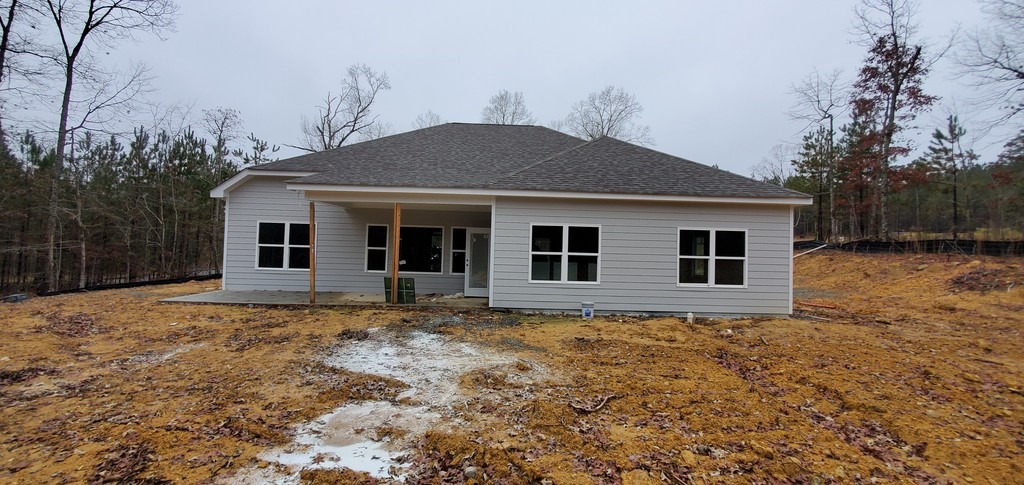Every roofing system tells a story—one written by wind, sun, snow, and rain. The changing seasons leave their mark on shingles and seams, gradually revealing which materials truly stand the test of time. Understanding how weather patterns influence various roofing options is key to making a smart, long-term investment in your home.
While all roofs are designed to protect, not all materials respond the same way to seasonal challenges. Heat expands, cold contracts, and moisture finds every opportunity to slip through small vulnerabilities. Let’s explore how different weather conditions impact popular roofing materials—and what homeowners should know before choosing or maintaining their roof.
Companies like D&G Exteriors often work with homeowners across all seasons, where understanding material behavior is crucial for durability and performance.
Winter: A Test of Flexibility and Resistance
Cold weather puts roofing systems to the test, especially when snow and ice settle in. Freeze-thaw cycles are particularly harsh on certain roofing materials.
Asphalt shingles, the most common roofing choice, tend to become brittle in subzero temperatures. Repeated freezing and thawing can lead to cracks and granule loss. If snow accumulates and melts unevenly, ice dams may form at the roof’s edge—forcing water beneath the shingles.
Metal roofs are more resilient in winter conditions. Snow tends to slide off easily due to the slick surface, reducing the risk of buildup. However, metal expands and contracts with temperature shifts, which requires special fastening systems to prevent warping or gaps.
Wood shingles or shakes struggle in freezing conditions if they absorb too much moisture. Saturated wood freezes and splits, leading to costly roof repair or premature replacement.
In all cases, proper attic ventilation and insulation are essential for minimizing winter-related damage, no matter the roofing material in use.
Spring: A Season of Discovery
As snow melts and spring rain arrives, this season often reveals what winter left behind. Moisture, wind, and early thunderstorms expose underlying weaknesses in any roofing system.
Asphalt roofs may show signs of blistering or lifting where adhesive bonds were weakened by winter weather. Homeowners should check for missing shingles, exposed nails, and clogged gutters.
Spring’s fluctuating temperatures also affect flat or low-slope roofing systems, especially those with synthetic membranes. The material’s elasticity is put to the test as daytime heat softens it, and nighttime cold causes contraction.
For those with older roofing systems, spring is a perfect time to assess whether minor repairs will hold up or if a full roof replacement is nearing.
Summer: Heat and UV Pressure
In summer, roofs endure a constant barrage of ultraviolet radiation and high temperatures. These conditions are more than just uncomfortable—they actively degrade many roofing surfaces.
Asphalt shingles tend to soften and shed granules when exposed to intense sun for long periods. The darker the shingle, the more heat it absorbs, which increases attic temperatures and accelerates wear. This is why energy-conscious homeowners often consider light-colored shingles for better thermal performance.
Metal roofing performs well in hot climates, reflecting sunlight and maintaining lower surface temperatures. However, if improperly installed, it can amplify attic heat without adequate ventilation.
Clay tiles and concrete roofs fare exceptionally well in hot weather. Their mass and reflectivity help regulate rooftop temperatures. However, they’re heavy and more susceptible to cracking if temperature extremes occur rapidly.
Deck builders and roofing professionals alike often coordinate projects in the summer months. Deck additions or shade structures must be properly integrated with the roofing system to avoid moisture entrapment or airflow disruption. Homeowners planning exterior upgrades benefit from working with a skilled team that understands how different elements of a home connect. A trusted deck builder in Beverly, MA ensures every detail is aligned for both function and aesthetics. This kind of collaboration not only prevents structural issues but also enhances the overall performance and value of your outdoor space.
Fall: Preparation and Prevention
Fall is the season of transition, when temperatures cool and the home prepares for winter stress. For roofing systems, it’s a crucial period for inspection and maintenance.
Falling leaves can clog gutters and valley areas, creating moisture traps. Any roofing material—whether it’s metal, asphalt, or wood—is vulnerable when drainage systems are blocked. Pooling water can lead to leaks, rot, and mold.
Composite shingles often start to show their age in the fall. Color fading, lifting, or missing granules become more obvious as sun angles shift. These signs can help homeowners determine if the roofing system is still functional or if roof repair should be scheduled before the first snowfall.
Fall is also the ideal time to reseal flashing, check vent boots, and inspect areas where roofing meets siding or window frames. Preventive measures now can save thousands later.
Regional Weather and Roofing Longevity
While seasonal changes are universal, their impact is highly localized. Homes in coastal areas experience high humidity and salt exposure, while inland homes may deal with dry heat, snow loads, or hailstorms. Your roofing company should help evaluate material choices based on these localized patterns.
High-humidity regions often cause problems for wood shingles, which are prone to rot and algae. In these areas, homeowners might opt for synthetic materials that resist biological growth.
Hail-prone zones favor impact-resistant shingles, often reinforced with polymers or rubber to absorb shock. Metal roofing also performs well under hail but may dent depending on thickness and coating.
Windy climates require secure fastening systems. Even the best materials can fail if not properly anchored. Asphalt shingles rated for high-wind zones and interlocking metal panels are popular in these environments.
Snow-heavy regions benefit from materials that allow for easy shedding of snow, such as metal or properly pitched tile systems.
Matching Roofing Systems to Your Home’s Needs
There’s no one-size-fits-all solution in roofing. What matters most is aligning your material selection with seasonal and environmental demands. Aesthetics matter, but function should always come first.
If you’re considering a new deck or updating your siding or windows, it’s a great time to take stock of how all exterior elements interact. Roofing affects everything—from attic moisture to energy loss around window frames. Homes that balance all exterior systems, rather than treat them as separate projects, tend to perform better and last longer.
Professionals like D&G Exteriors emphasize this holistic approach to exterior design, especially in regions with dynamic seasonal shifts.
Final Thought: The Seasons Are Relentless—Your Roof Shouldn’t Be
No matter where you live, your roof is in constant conversation with the seasons. It contracts, expands, sheds water, and absorbs heat—day in and day out. By understanding how different roofing materials react to seasonal stress, you’ll be better equipped to care for your home and avoid unnecessary costs down the line.
Selecting the right materials is just the beginning. Maintenance, inspection, and proactive upgrades ensure your roof keeps protecting your investment—through every storm, thaw, and heatwave that comes its way.



